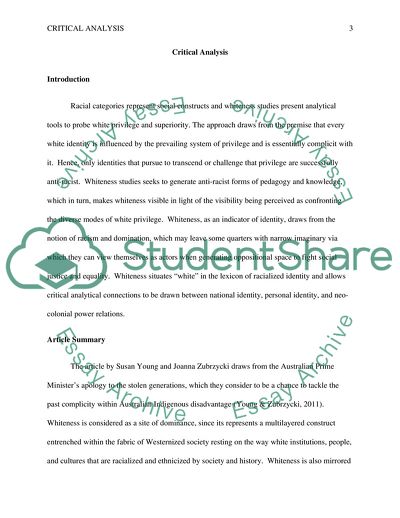Cite this document
(Critical Analysis of Educating Australian social workers in the Coursework, n.d.)
Critical Analysis of Educating Australian social workers in the Coursework. https://studentshare.org/sociology/1814268-critical-analysis-of-educating-australian-social-workers-in-the-post-apology-era-the-potential-offered-by-a-whiteness-lens
Critical Analysis of Educating Australian social workers in the Coursework. https://studentshare.org/sociology/1814268-critical-analysis-of-educating-australian-social-workers-in-the-post-apology-era-the-potential-offered-by-a-whiteness-lens
(Critical Analysis of Educating Australian Social Workers in the Coursework)
Critical Analysis of Educating Australian Social Workers in the Coursework. https://studentshare.org/sociology/1814268-critical-analysis-of-educating-australian-social-workers-in-the-post-apology-era-the-potential-offered-by-a-whiteness-lens.
Critical Analysis of Educating Australian Social Workers in the Coursework. https://studentshare.org/sociology/1814268-critical-analysis-of-educating-australian-social-workers-in-the-post-apology-era-the-potential-offered-by-a-whiteness-lens.
“Critical Analysis of Educating Australian Social Workers in the Coursework”. https://studentshare.org/sociology/1814268-critical-analysis-of-educating-australian-social-workers-in-the-post-apology-era-the-potential-offered-by-a-whiteness-lens.


